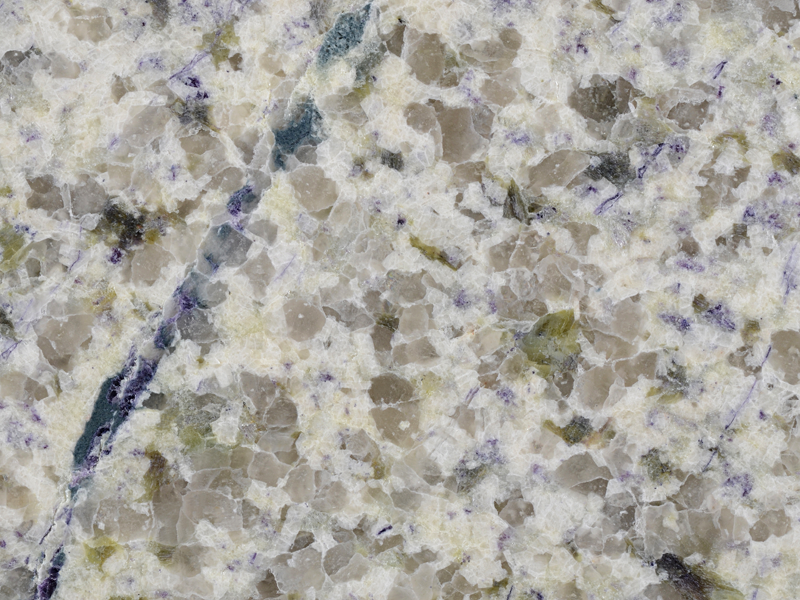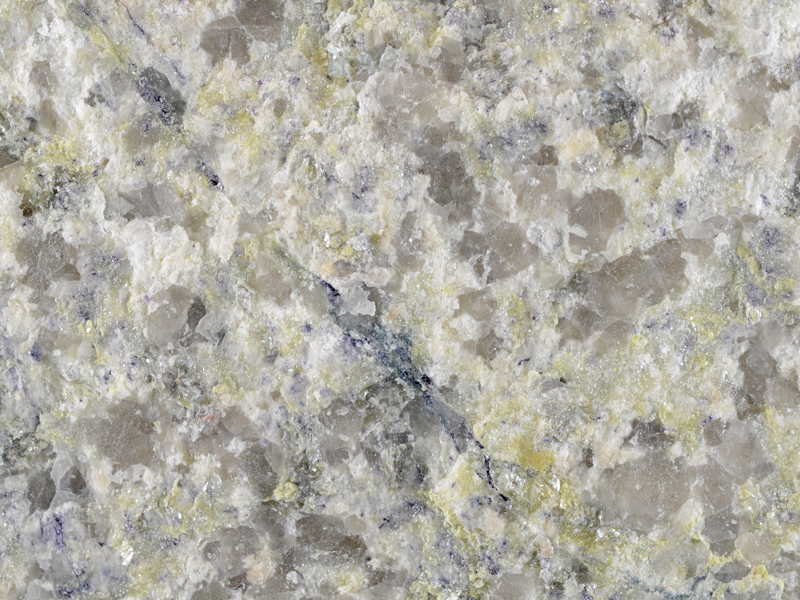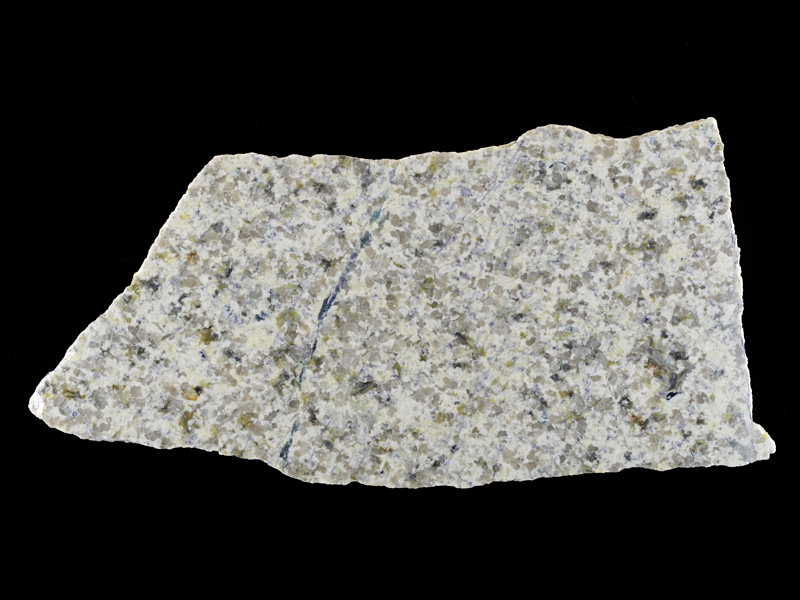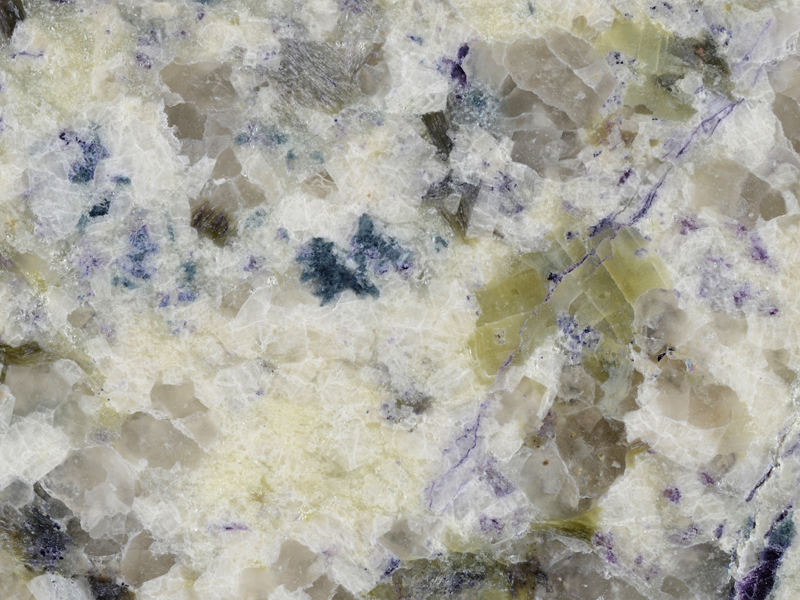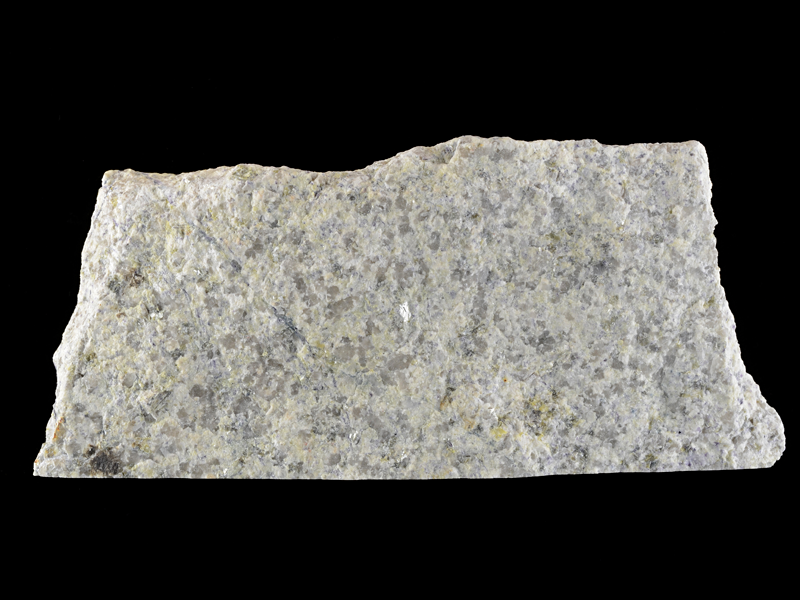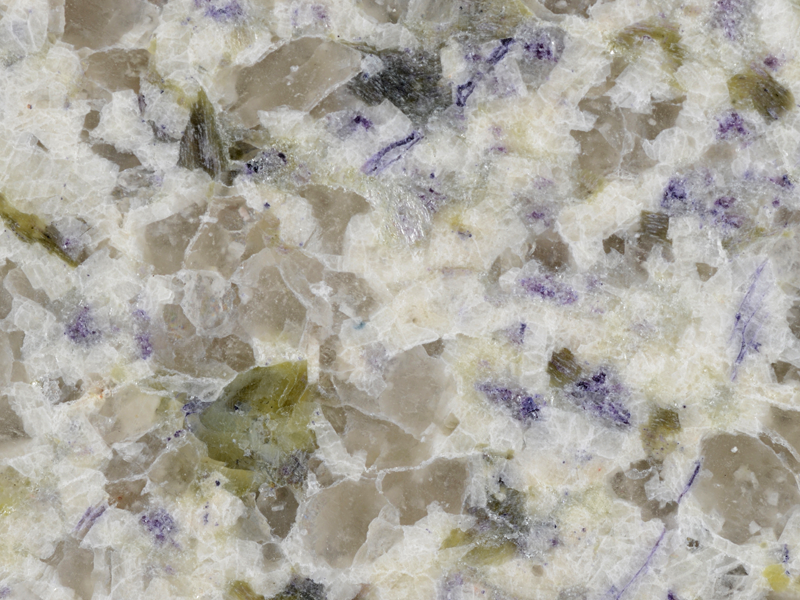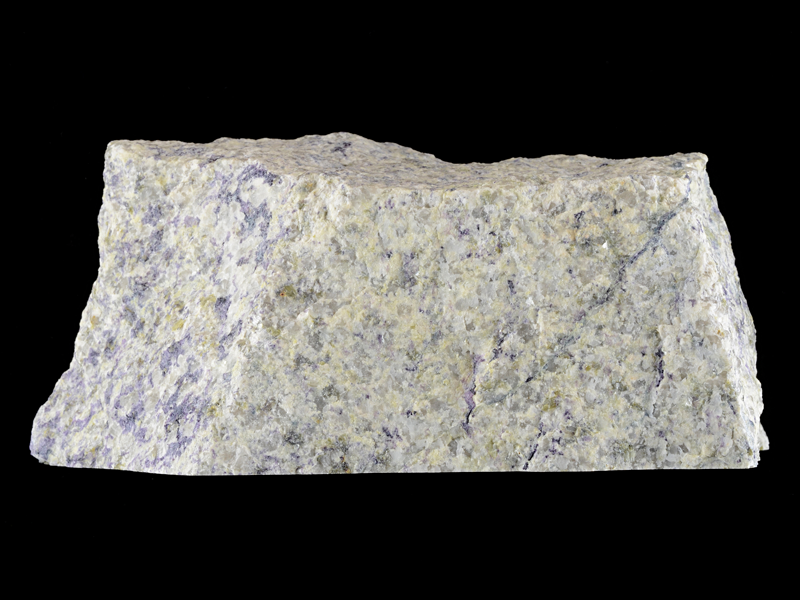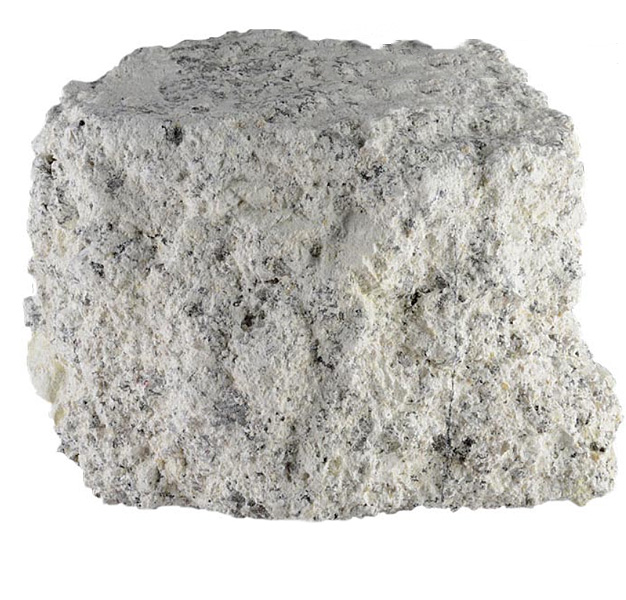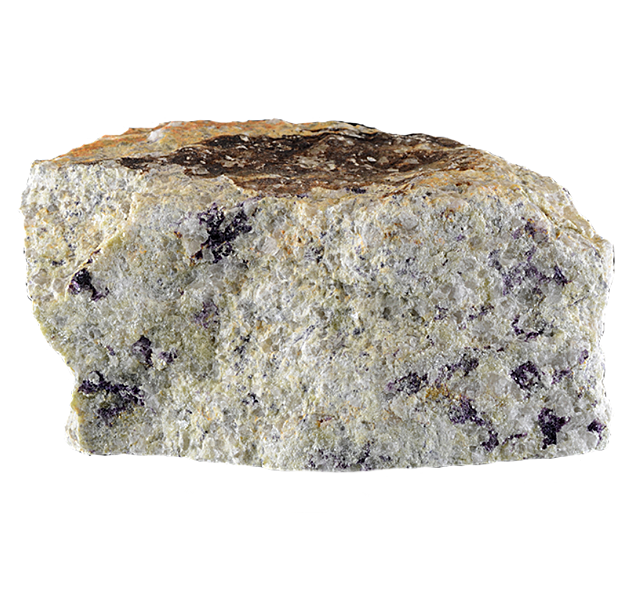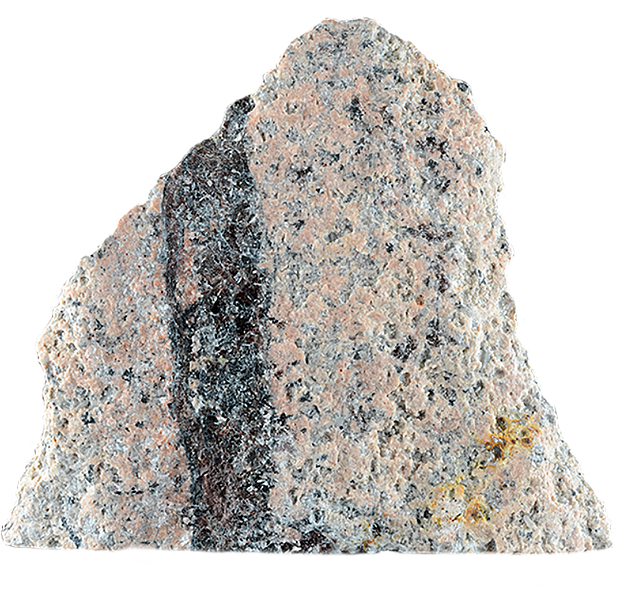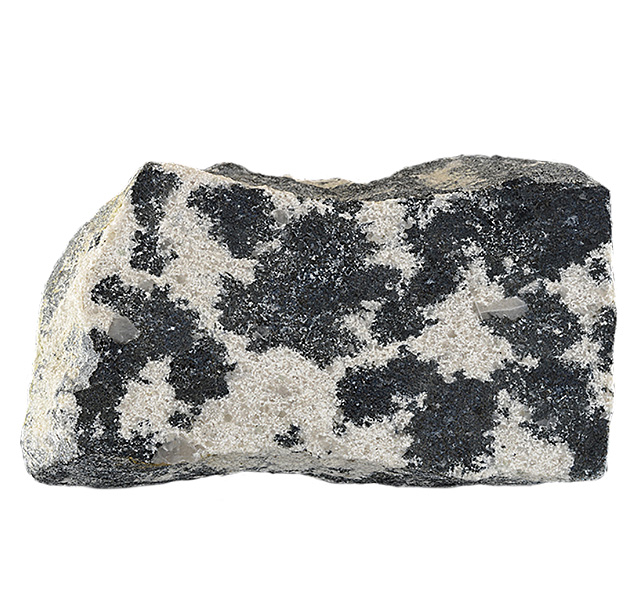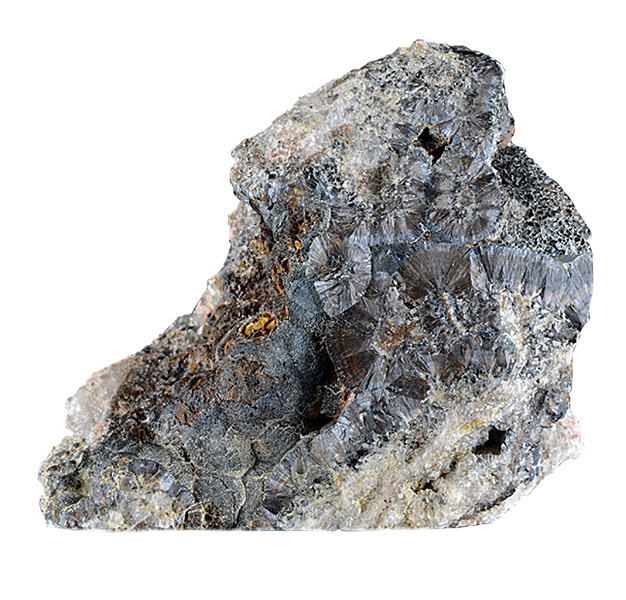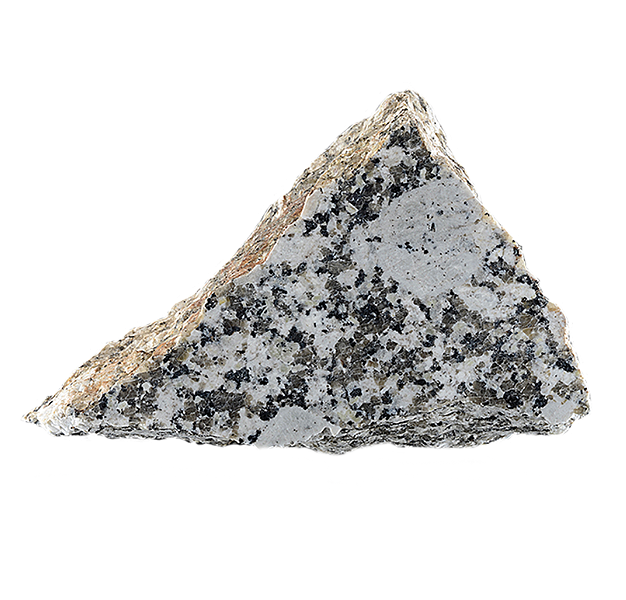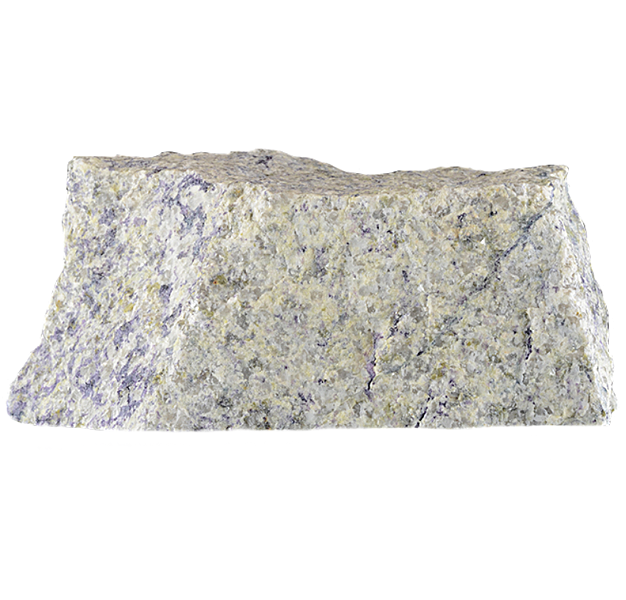
Fact sheet
This lithium-fluorine-enriched granite was collected close to the other fluorite granite in this collection, but has been included here because it shows veining and kaolinite development better than sample #42. Both rocks have been subjected to at least two major hydrothermal events. The first phase of hydrothermal alteration caused breakdown of the feldspars, and the second, driven by fluorine-rich fluids ended with fluorite crystallisation (replacement) along cleavages in lithium mica and in voids within feldspar.
Although the hydrothermal fluids pervasively attacked this rock, some were also channelled through veinlets such as the one crossing the centre of the thin section. Here needles of tourmaline crystallised at the vein margins prior to fluorite precipitation indication a change in conditions from boron to fluorine-dominated fluids.
Kaolinite is notoriously difficult to prepare in thin section (its a soft white clay) and is often lost during sample preparation, however, in rotation 2 the bluish-orange patch (XPL) it has been preserved. This field of view also shows fluorite alteration along cleavages in a lithium mica and two low birefringent crystals of fluorapatite partially enclosed by the lithium mica.
This rock is close to being a china clay resource!
A case study of the St Austell granite complex in Cornwall, England, illustrating the range of rocks associated with a granite intrusion. The earliest part of the complex is a siderophyllite (biotite) granite containing muscovite and tourmaline typical of a SW England granite, with many primary magmatic features.
This early intrusion was followed by the intrusion of an evolved volatile-rich magma which was the driving force behind a series of intense hydrothermal processes as volatiles escaped from this magma and helped to establish an extensive alteration halo (aureole). Boron, fluorine and lithium (as well as water) played major roles in the formation of the second intrusion and in the associated hydrothermal processes. Igneous activity lasted around 18 million years from 282 Ma (siderophyllite granite) to 265 Ma (fluorite granite).
